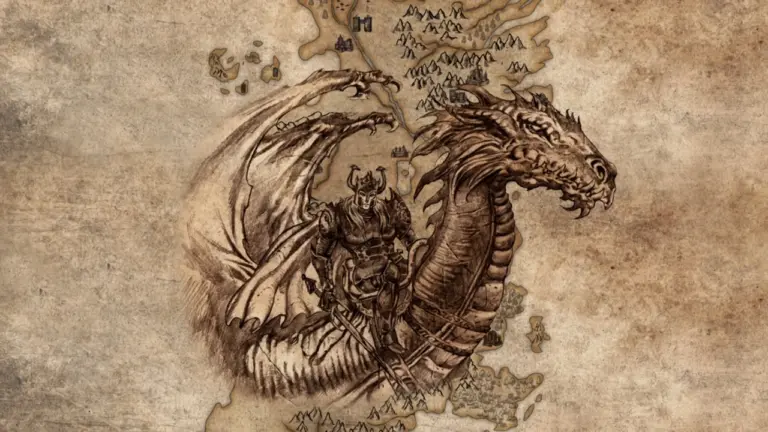Remember “Bandersnatch”? The wild Black Mirror episode that hit Netflix in 2018 and got the whole world furiously mashing buttons to change someone’s digital fate? Well, that’s starting to feel about as retro as a Choose Your Own Adventure paperback, and honestly, things have gotten jaw-droppingly wild since. It’s June 2025, and interactive TV isn’t just a novelty anymore — it’s popping off in ways nobody predicted.
From Bandersnatch to Building VR Worlds
Let’s talk glow-up. After Bandersnatch, the interactive TV scene didn’t slow down for even a nanosecond. Showrunners, techies, and digital dreamers sprinted into innovation overdrive. Studios now launch fully immersive VR spin-offs left and right.
- Major networks team up with top-tier gaming studios to drop episodic VR stories. If you thought pausing live TV was fun, just wait until you can step through the screen — room scale and all.
- Want to walk into a crime scene before the cop even gets there? Get ready to swipe your VR headset on and stroll right into prime time, where you poke around, zap clues, and the story reroutes with every choice you make.
But this isn’t just stunt tech for a small crowd. According to industry sources listed by Promwad, VR and augmented reality tech are no longer extra — they’re essentials in the tool kit of producers looking to grab Gen Z and millennial eyeballs.
Amazon and the Art of Viewer-Driven TV
If you hop on Reddit’s /r/television or check out #TVInnovation trending on Twitter, everyone’s buzzing about Amazon Prime’s newest batch of viewer-driven shows. Here’s how it works: the plot isn’t set in stone. It’s clay — moldable based on your micro-decisions.
- Algorithms track viewer choices in real-time so the backend can shift character fates, bottle up or unleash drama, and even swap endings from episode to episode.
- Want to sabotage a romance? Or maybe you hope the villain finally wins one? Good news: you vote, and the system keeps score.
It’s not science fiction anymore, it’s just another Friday binge. According to Red Ant Media, Amazon and other platforms lean hard on 5G streaming muscle to make sure nothing lags behind, which means your on-screen decisions register instantly.
Plug-and-Play Branching Tech: The Startup Shuffle
Behind the curtain, a new gold rush is on. Startups now sell “plug-and-play” branching tech to streaming giants, cable holdouts, and indie creators chasing that sweet, sweet engagement spike.
- Companies like Eko, Interlude, and Scriptic pop up all over industry trade shows, promising drag-and-drop tools for any studio. If you want to add a dozen branching paths to a sitcom episode, there’s software for that.
- And it’s not just giant studios cashing in. You’ll spot podcasters and TikTokers using these tools to launch interactive stories on shoestring budgets, which means you might be the next content czar.
This new wave democratizes interactive TV. Even a single bedroom creator can cook up the same kind of format that, ten years back, would’ve taken a dozen engineers and a truckload of cash.
Tech That Makes This All Happen
Let’s get into the guts for a second. This explosion of immersive storytelling isn’t just creative pluck. There’s a lot of tech elbow grease going on.
- 5G connectivity finally delivers the kind of real-time, seamless experience that doesn’t break immersion. Viewers barely notice any loading, even in visually intense VR worlds.
- AI does the heavy lifting when it comes to weaving personalized content. Advanced algorithms not only recommend which interactive show you might want tonight but also tweak scenes and story arcs dynamically.
- Extended reality (XR) platforms merge gaming’s best spatial tricks with TV’s flair for narrative, letting you pick your way through sprawling universes as if you owned the place.
Promwad notes that as of 2025, XR isn’t something producers experiment with — it’s the new baseline. If your TV series doesn’t give at least a little taste of interactivity or immersion, it might as well be called a rerun.
Why Everybody’s Obsessed with Engagement
Here’s a truth streaming bosses shout about (when not on mute). User engagement numbers rocket when viewers feel agency over a story. Stories tailored to choices? That’s addictive. Viewers stick around longer, watch more, and obsessively replay episodes to find “secret” endings.
This avalanche of engagement benefits everyone:
- Writers and directors suddenly play like game designers, building worlds with docile drama paths and untamed chaos all woven underneath.
- Advertisers get new playgrounds, too. Some interactive platforms now let brands sneak-in “choose-your-own” ads, so you pick which offer you want to see. Weird but weirdly effective.
- Studios wield a data goldmine. When millions of viewers pick one storyline over another, writers and showrunners know exactly what the crowd wants. That’s ammo for greenlighting sequels, spinoffs, or reboots nobody predicted (but everyone wanted).
The Social Side: Watch, Chat, Vote, Repeat
Interactive TV also triggers a big wave of social fun. On platforms like YouTube, Twitch, and Reddit, fans compare their storylines, post screenshots, and start heated debates: “Did you let the android escape?” “Did you vote for the twist ending?” People share custom walkthroughs and create “collective endings” during mass-watch events.
Some shows even weave in collective voting in real time. One popular sci-fi series on Amazon Prime let live Twitch watchers decide who the main character saves. The streamer flipped on audience votes at key crisis points, changing the episode’s flow instantly based on viewer numbers.
And that’s not even scratching the surface of all the meme potential.
Monetization — Show Me the Money!
Let’s be real — interactive TV is also a money magnet. How?
- Viewers invest in extra story packs or side quests, eager to unlock alternate arcs for favorite characters.
- Product placements in VR settings get hyper-personalized — you might spot digital sneakers matching your online wishlist.
- Savvy creators hold “event endings” and charge a micro-fee to access exclusive branches, turning cliffhangers into cash cows.
And don’t ignore the data. Every tap, click, and in-game dialogue option gives networks more insight into what keeps folks glued to the screen.
Short-Form and Mobile-First Micro-Series
Finally, interactive isn’t just for long, cinematic VR explorable epics. The sauce now flavors short-form series on TikTok, Snapchat, even Instagram. Micro-series with snappy, phone-first episodes let watchers swipe or tap to lead cliffhangers into five directions — then post about it in a comment storm.
Startups jump on that trend, too, arming content creators with clip-based editing tools that drip-feed drama in doses as small as 90 seconds. It’s ideal for social sharing and snack-sized, attention-deficit audiences.
What’s Next? Press Start to Continue
So, where’s this wild ride headed? The lines keep blurring between TV, games, and social media. Expect to see even wilder mash-ups: cross-platform adventures, AI-generated actors, and stories you can enter via a smartwatch notification. Tech like spatial audio and haptic feedback are rumored to make the next wave even grabbier. Producers already hint at episodic arcs that jump between your phone, headset, and TV.
If you thought marathon TV watching was a solo sport, buckle up — your next season finale might need your whole crew’s vote to finish. Whether you tune in for the serious drama or just want to troll your friends with your whacky plot picks, interactive and immersive television is here to stay. One thing’s for sure — predictable couch potatoing? Totally obsolete. The power to steer the story sits firmly in your hands, headset, or touchscreen.
So, are you ready to pick a path and roll the dice? The future of TV is waiting for your next move.





